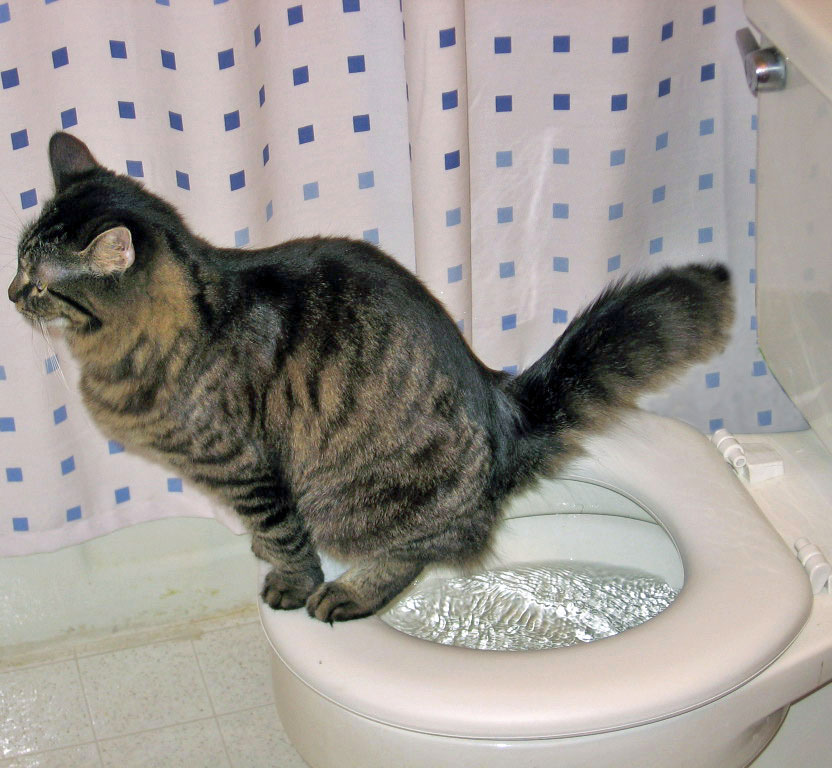Dangers of Flushing Cat Poop Down Your Toilet - Avoid Potential Issues
Dangers of Flushing Cat Poop Down Your Toilet - Avoid Potential Issues
Blog Article
Here down the page you'll find lots of good quality data when it comes to Can You Flush Cat Poo or Litter Down the Toilet?.

Intro
As cat owners, it's vital to be mindful of just how we dispose of our feline pals' waste. While it might seem practical to purge pet cat poop down the commode, this technique can have damaging effects for both the setting and human wellness.
Alternatives to Flushing
Fortunately, there are much safer and a lot more liable methods to throw away cat poop. Think about the adhering to alternatives:
1. Scoop and Dispose in Trash
One of the most usual method of getting rid of pet cat poop is to scoop it into an eco-friendly bag and throw it in the trash. Make certain to utilize a specialized clutter scoop and dispose of the waste promptly.
2. Use Biodegradable Litter
Choose eco-friendly cat trash made from products such as corn or wheat. These trashes are environmentally friendly and can be safely thrown away in the garbage.
3. Bury in the Yard
If you have a backyard, consider hiding feline waste in a designated location far from veggie gardens and water resources. Make sure to dig deep enough to avoid contamination of groundwater.
4. Install a Pet Waste Disposal System
Buy a pet dog garbage disposal system particularly designed for feline waste. These systems utilize enzymes to break down the waste, reducing smell and ecological effect.
Health and wellness Risks
Along with environmental concerns, flushing cat waste can likewise pose wellness risks to people. Pet cat feces may include Toxoplasma gondii, a parasite that can create toxoplasmosis-- a potentially severe health problem, especially for expecting ladies and people with weakened body immune systems.
Ecological Impact
Flushing cat poop introduces dangerous microorganisms and bloodsuckers into the water system, posturing a considerable danger to marine communities. These pollutants can negatively influence aquatic life and concession water high quality.
Final thought
Accountable pet dog ownership extends past providing food and sanctuary-- it also entails proper waste administration. By refraining from flushing pet cat poop down the toilet and opting for alternate disposal techniques, we can lessen our ecological impact and protect human health.
Why Can’t I Flush Cat Poop?
It Spreads a Parasite
Cats are frequently infected with a parasite called toxoplasma gondii. The parasite causes an infection called toxoplasmosis. It is usually harmless to cats. The parasite only uses cat poop as a host for its eggs. Otherwise, the cat’s immune system usually keeps the infection at low enough levels to maintain its own health. But it does not stop the develop of eggs. These eggs are tiny and surprisingly tough. They may survive for a year before they begin to grow. But that’s the problem.
Our wastewater system is not designed to deal with toxoplasmosis eggs. Instead, most eggs will flush from your toilet into sewers and wastewater management plants. After the sewage is treated for many other harmful things in it, it is typically released into local rivers, lakes, or oceans. Here, the toxoplasmosis eggs can find new hosts, including starfish, crabs, otters, and many other wildlife. For many, this is a significant risk to their health. Toxoplasmosis can also end up infecting water sources that are important for agriculture, which means our deer, pigs, and sheep can get infected too.
Is There Risk to Humans?
There can be a risk to human life from flushing cat poop down the toilet. If you do so, the parasites from your cat’s poop can end up in shellfish, game animals, or livestock. If this meat is then served raw or undercooked, the people who eat it can get sick.
In fact, according to the CDC, 40 million people in the United States are infected with toxoplasma gondii. They get it from exposure to infected seafood, or from some kind of cat poop contamination, like drinking from a stream that is contaminated or touching anything that has come into contact with cat poop. That includes just cleaning a cat litter box.
Most people who get infected with these parasites will not develop any symptoms. However, for pregnant women or for those with compromised immune systems, the parasite can cause severe health problems.
How to Handle Cat Poop
The best way to handle cat poop is actually to clean the box more often. The eggs that the parasite sheds will not become active until one to five days after the cat poops. That means that if you clean daily, you’re much less likely to come into direct contact with infectious eggs.
That said, always dispose of cat poop in the garbage and not down the toilet. Wash your hands before and after you clean the litter box, and bring the bag of poop right outside to your garbage bins.
https://trenchlesssolutionsusa.com/why-cant-i-flush-cat-poop/

As an avid person who reads about How to Dispose of Cat Poop and Litter Without Plastic Bags, I thought sharing that excerpt was really useful. Make sure you take a moment to share this write-up if you liked it. I appreciate reading our article about How to Dispose of Cat Poop and Litter Without Plastic Bags.
Visit The Following Page Report this page